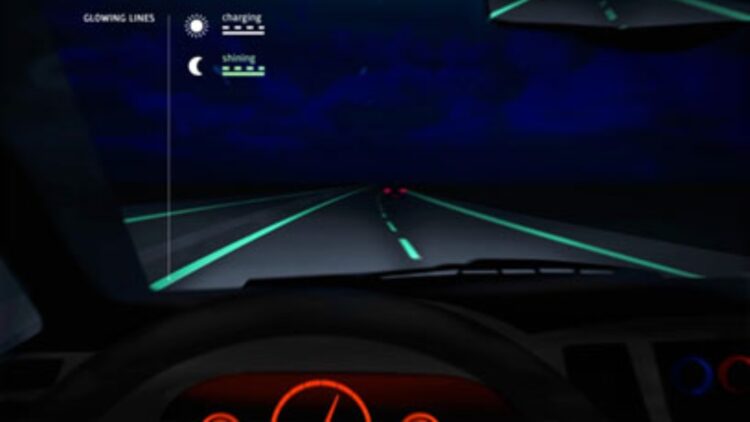World
Netherlands Innovates with Glow-in-the-Dark Road Markings

The Netherlands has introduced an innovative approach to road safety with the development of glow-in-the-dark road markings. This initiative aims to enhance visibility without relying solely on traditional streetlights, which are often turned off to save energy costs. Utilizing a photoluminescent powder that absorbs solar energy, these markings can illuminate the road for up to eight hours after sunset. While the concept has garnered attention, early testing has revealed challenges, particularly in wet conditions.
Combining Sustainability and Safety
Road safety is a critical issue that relies heavily on effective signage and markings. In Europe and the United States, road markings differ in color but serve similar functions to ensure compliance with traffic regulations. The project in the Netherlands, spearheaded by designer Daan Roosegaarde, seeks to merge environmental sustainability with road safety. According to Roosegaarde, the initiative reflects a growing need for energy-efficient solutions in urban planning.
During a pilot test conducted on a 500-meter stretch of road near Oss, the glow-in-the-dark markings were installed to assess their effectiveness. Roosegaarde explained, “The government is turning off streetlights at night to save money; energy is becoming much more important than we could have imagined 50 years ago. This road is about safety and envisions a more sustainable and interactive world.” Unfortunately, the results showed that visibility significantly diminished in wet weather, raising concerns about the safety of these markings.
Regulatory Challenges in the United States
Despite the potential benefits of glow-in-the-dark road markings, their adoption faces significant hurdles, particularly in the United States. The Manual on Uniform Traffic Control Devices (MUTCD) outlines strict regulations regarding road signage, requiring that they be retroreflective. This means they must reflect light from vehicle headlights and other sources to ensure visibility at night. The photoluminescent markings developed in the Netherlands do not meet these criteria, preventing their implementation in any U.S. state.
The pilot test’s findings indicate that while the desire for sustainable solutions in road design is evident, significant work remains before such innovations can be safely integrated into existing infrastructure. The focus on sustainable materials and designs is increasingly prevalent, yet the basic requirements for road safety must not be compromised.
As cities around the world explore alternatives to traditional street lighting and signage, the Dutch initiative serves as a reminder of the balance required between innovation and safety. While glow-in-the-dark road markings may represent a step toward more sustainable urban environments, their practical application must first address the safety standards that govern road usage.
Ultimately, the journey to revolutionize road safety continues as stakeholders weigh the potential of new technologies against established safety protocols. The outcomes of this initiative will be closely monitored as the Netherlands seeks to redefine road safety for the future.
-

 Science2 months ago
Science2 months agoInventor Achieves Breakthrough with 2 Billion FPS Laser Video
-

 Health2 months ago
Health2 months agoCommunity Unites for 7th Annual Into the Light Walk for Mental Health
-

 Top Stories2 months ago
Top Stories2 months agoCharlie Sheen’s New Romance: ‘Glowing’ with Younger Partner
-

 Entertainment2 months ago
Entertainment2 months agoDua Lipa Aces GCSE Spanish, Sparks Super Bowl Buzz with Fans
-

 Health2 months ago
Health2 months agoCurium Group, PeptiDream, and PDRadiopharma Launch Key Cancer Trial
-

 Top Stories2 months ago
Top Stories2 months agoFormer Mozilla CMO Launches AI-Driven Cannabis Cocktail Brand Fast
-

 Entertainment2 months ago
Entertainment2 months agoMother Fights to Reunite with Children After Kidnapping in New Drama
-

 World2 months ago
World2 months agoIsrael Reopens Rafah Crossing After Hostage Remains Returned
-

 Business2 months ago
Business2 months agoTyler Technologies Set to Reveal Q3 Earnings on October 22
-

 World2 months ago
World2 months agoR&B Icon D’Angelo Dies at 51, Leaving Lasting Legacy
-

 Health2 months ago
Health2 months agoNorth Carolina’s Biotech Boom: Billions in New Investments
-

 Health2 months ago
Health2 months agoYouTube Launches New Mental Health Tools for Teen Users









